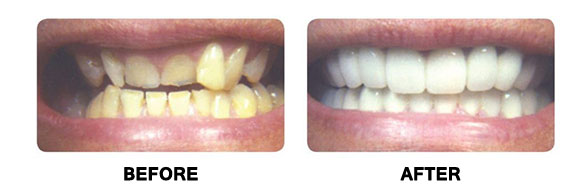Home » Uncategorized
Regular gum check-ups are essential for maintaining good oral health. There are several signs that indicate a need for a gum check-up. These signs include redness, swelling, and tenderness of the gums. Bleeding gums, especially during brushing or flossing, can also be a sign of gum problems. Bad breath or a persistent bad taste in the mouth can indicate poor gum health as well. Loose or shifting teeth, changes in the bite, or gaps forming between the teeth are also warning signs.
Poor gum health can lead to several risks and complications. One potential complication is damage to the cardiovascular system. Studies have shown a correlation between gum disease and an increased risk of heart disease and stroke. Additionally, poor gum health can lead to permanent damage to the mouth, including tooth loss or damage to the supporting structures of the teeth.
Some severe cases that require immediate attention from a dentist include gum disease and gingivitis. Gum disease, also known as periodontal disease, is a bacterial infection that affects the tissues surrounding the teeth. It can lead to bone loss and eventual tooth loss if left untreated. Gingivitis, on the other hand, is inflammation of the gums and is an early stage of gum disease. It is characterized by red, swollen gums that bleed easily.
Addressing any sudden growth in the mouth, whether it be an abscess or oral cancer, is of utmost importance and should be done as quickly as possible. The reason for this urgency lies in the potential health consequences associated with these growths.
Firstly, let’s consider abscesses. These are painful infections that can develop around the root of a tooth or in the space between the teeth and gums. If left untreated, abscesses can spread to other parts of the body, leading to serious complications. In some cases, the infection can even enter the bloodstream and cause a condition called sepsis, which can be life-threatening. Therefore, immediate attention is crucial in order to prevent the spread of infection and ensure appropriate treatment.
Similarly, the significance of promptly addressing oral cancer growths cannot be overstated. Oral cancer can manifest itself as unusual growths or ulcers in the mouth. If detected early, the chances of successful treatment are significantly higher. However, if left undiagnosed and untreated, oral cancer can rapidly progress and spread to other parts of the body. This can result in more invasive treatments, longer recovery times, and a lower chance of survival.
It is important to note that dentists play a vital role in identifying potential growths during regular checkups through visual inspection and palpation. However, the intervals between these checkups can be several months, which means that growths may appear and progress in between appointments. Therefore, it is crucial to be vigilant and visit a dentist promptly if any unusual growths or symptoms emerge, even if it is not yet time for a scheduled checkup.
Excessive bleeding while brushing or flossing can be an indication of gum disease, a common condition that affects many individuals. If you experience this issue, it is important to address it promptly to prevent further complications. The first step is to acknowledge that excessive bleeding may be a sign of gum disease.
To address this matter, it is advisable to inform your dentist about the issue and seek their advice on fighting gum disease effectively. Dentists possess the knowledge and expertise to diagnose gum disease and provide appropriate treatments or recommendations. Additionally, they can offer professional guidance on maintaining good oral hygiene practices to prevent the progression of gum disease.
When visiting your dentist, communicate your concerns regarding excessive bleeding during brushing or flossing. Share any other symptoms you have been experiencing, such as swollen or tender gums, bad breath, or tooth sensitivity. These details will assist the dentist in assessing the severity of the condition and determining the most suitable treatment plan.
In the meantime, continue brushing and flossing your teeth regularly as these practices are essential in maintaining oral health. However, be gentle while brushing and use a soft-bristle toothbrush to avoid further irritation to inflamed gums. Furthermore, incorporating an antimicrobial mouthwash into your daily oral care routine can reduce the growth of bacteria and promote gum health.
Remember that excessive bleeding during oral care routines should not be ignored. By promptly addressing this issue with your dentist, you can receive the appropriate treatment and advice necessary to combat gum disease effectively.
Persistent bad breath, also known as halitosis, can be caused by various factors and can be treated accordingly. One of the main causes is poor oral hygiene, which leads to tooth decay and cavities. These dental issues contribute to the buildup of bacteria in the mouth, resulting in bad breath. Regular brushing, flossing, and using mouthwash can eliminate or reduce these problems.
Infections in the mouth, such as periodontal disease, can also cause halitosis. This occurs when bacteria infect the gums and teeth, leading to inflammation and the release of foul-smelling gases. Treating the infection through professional dental cleanings, antibiotics, and improved oral hygiene can help alleviate these symptoms.
Dry mouth, or xerostomia, is another common cause of bad breath. When the mouth lacks sufficient saliva, bacteria can grow more easily, resulting in an unpleasant smell. Drinking plenty of water and using over-the-counter saliva substitutes or oral moisturizers can help combat dry mouth and minimize halitosis.
Sinus infections and respiratory system infections can also be culprits for bad breath. Postnasal drip, caused by mucus draining down the throat, can create an odor in the mouth. Treating the underlying infection with medication can alleviate the symptoms of bad breath.
Lastly, bacterial infections in the stomach, such as Helicobacter pylori, can cause halitosis. Appropriate treatment by a healthcare professional is necessary to address these infections and eliminate bad breath.
Quick recession of gums, also known as gingival recession, is a condition in which the gums pull away from the teeth, exposing the root surfaces. There are several potential causes for this problem. Firstly, aggressive tooth brushing, especially using a hard-bristled toothbrush or brushing with excessive force, can lead to quick gum recession. Secondly, periodontal diseases such as gum inflammation and advanced periodontitis can cause the gums to recede rapidly. Other factors include hormonal changes, genetic predisposition, and even tobacco use.
The consequences of quick gum recession can be severe. When the root surfaces become exposed, it increases the risk of tooth decay. The roots lack the protective layer of enamel that the crowns of the teeth have, making them more susceptible to decay. Furthermore, quick gum recession can lead to tooth sensitivity, as the exposed roots are more sensitive to hot, cold, and sweet substances. In addition, this condition can result in an unattractive smile, which may affect a person’s self-confidence and social interactions.
One of the most concerning consequences of quick gum recession is the increased risk of infection. As the gums recede, deep gum pockets are formed, providing a space for harmful bacteria to accumulate. This can lead to gum infections, such as periodontitis, which can cause irreversible damage to the gums and supporting structures of the teeth.
It is crucial to seek dental care from a professional if you suspect quick gum recession. A dentist can evaluate the cause of the recession and provide appropriate treatment. This may include recommending changes in oral hygiene practices, such as using a soft-bristled toothbrush and adopting a gentler brushing technique. In cases of advanced gum recession, a dentist may perform surgical treatments to restore the gum tissues and prevent further recession. Seeking professional dental care is essential to prevent complications such as infection and other health-related issues associated with quick gum recession.
Comprehensive Dentistry in Wall & Spring Lake NJ offers a wide range of dental examinations and treatments to ensure the oral health and well-being of our patients. With a team of skilled and experienced dentists, we prioritize providing top-quality dental care to every individual.
Our comprehensive dental examinations encompass a thorough evaluation of the patient’s teeth, gums, jaw, and overall oral health. This includes examining for any signs of tooth decay, gum disease, oral cancer, or other oral health issues. Through these examinations, our dentists can detect problems at an early stage and recommend appropriate treatments to prevent further damage.
Alongside examinations, Comprehensive Dentistry also offers a variety of treatments to address dental issues. These include dental fillings, root canal therapy, teeth whitening, dental implants, orthodontic treatments, and periodontal therapy, among others. Our team of experts is dedicated to providing personalized and effective treatments to meet each patient’s unique needs.
Getting routine dental care not only ensures a healthy smile but also contributes to overall well-being. Contact us today for any of your dental needs.
Many people are scared of the dentist. They may have had a bad experience with a dentist in the past, or else they might just think that dentistry hurts. Do not let fear of the unknown keep you from having a dental cleaning. Dental cleanings are common procedures that can help maintain the health of your teeth. They give your dentist a chance to review your teeth, inspect for problems, and keep them clean.
You may hear your dentist or dental hygienist talk about a prophylaxis. That is nothing to worry about. That is just the fancy term for a dental cleaning to remove plaque. Everyone has plaque. It is the sticky film of bacteria that forms on your teeth and gums. If you do not remove plaque it can harden into tartar. Tarter is harder to remove. It can also lead to tooth decay, cavities, gum disease, and other issues. The point of a dental cleaning is to remove that plaque and tartar.
The first part of a dental cleaning is tartar removal. Traditionally, dentists use a scaler to remove tartar. The scalar is a small metal hook on the end of a tool, which the dentist or hygienist uses to scrape tartar. Dentists may also use other methods to remove tartar, such as ultrasonic waves.
Once your dentist has removed the tartar, they thoroughly clean your teeth. They usually use a special rotating brush and a grainy toothpaste-type substance to polish and clean your mouth. They may use a cleaning toothpaste and then a polish or an all-in-one product.
Once your teeth are cleaned, they will floss them. Flossing is very important. While flossing, they may instruct you on how to floss your teeth if they notice tartar in between the teeth.
Sometimes your dentist will end a cleaning with a fluoride treatment or sealer. These treatments are designed to help strengthen your teeth. You may get instructions not to eat or drink for 30 minutes or so after those treatments.
Dental cleanings are often accompanied by exams. During the exam, your dentist checks out the general health of your mouth. Once a year, these exams are accompanied by x-rays, which let your dentist see inside of your teeth to spot tooth decay that is not visible to the naked eye. Based on the exam and cleaning, the dentist may come up with a plan for additional treatment.
After-Hours Emergencies Or Issues
Call 732-556-9600
Our Services
Dental Emergencies
General Dentistry
Cosmetic Dentistry
Restorative Dentistry
Full Mouth Reconstruction
Smile Makeover

3350 Route 138 W
Bldg 2, Ste 127
Wall Township, NJ 07719
(732) 556-9600
 3350 NJ-138 W. Bldg 2, Ste 127, Wall Township, NJ 07719
732-556-9600
Prices Vary
Comprehensive Dentistry -
5 star rating - based on 25+ reviews in Google
3350 NJ-138 W. Bldg 2, Ste 127, Wall Township, NJ 07719
732-556-9600
Prices Vary
Comprehensive Dentistry -
5 star rating - based on 25+ reviews in Google
